Louisiana's communities of color already suffer from pollution and COVID. Now it's climate change.
RESERVE, Louisiana – Ernest Benedict Holland slumped into the front seat of his red Dodge pickup, pointed an air conditioning vent at his face, and tried to catch his breath as the thermometer edged toward 90 degrees.
The surgery he was supposed to have to clear a blocked artery near his heart was canceled due to Hurricane Ida. The storm blew out his power and ripped a hole in the bathroom roof of the little green house he’s lived in most of his 64 years.
Holland, 64, rode out Ida on Aug. 29, watching as the sky darkened, uprooted trees, ripped off roofs and destroyed buildings all around him. Because it’s been so hot, he’s been sleeping in his truck, the V-8 with 400,000 miles still “purring like a kitty,” he said.
“If I was able to get away from here, I would," he said between breaths. "But I’m a poor man. I can’t go nowhere.”
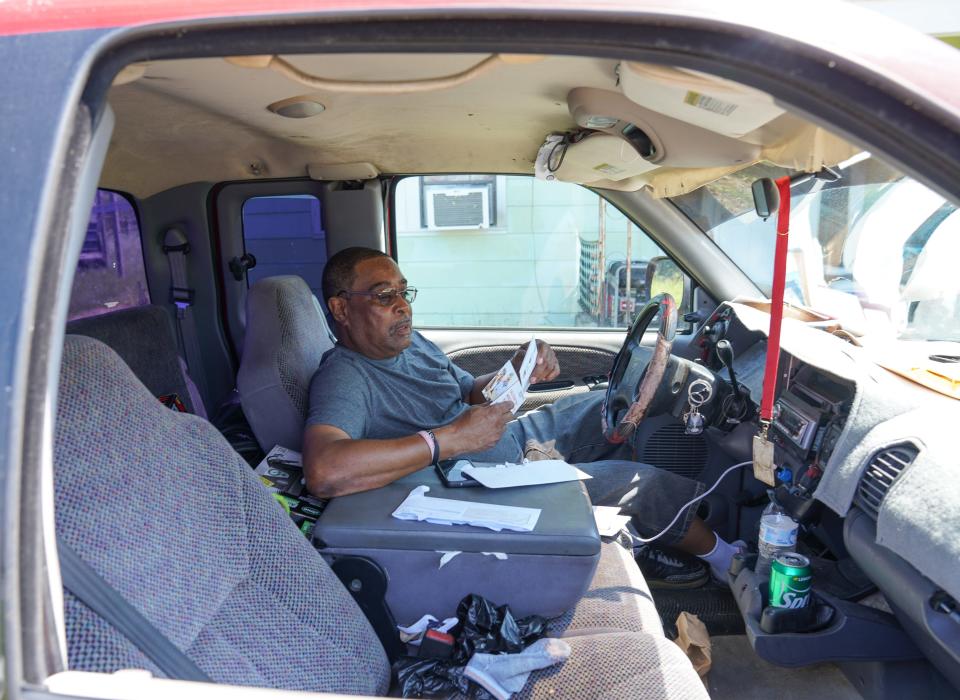
In addition to the congenital heart condition that makes it hard to walk and talk, Holland is recovering from prostate cancer. His house sits just 2,000 feet from the Denka Performance Elastomer chemical plant, which makes neoprene. Shell Oil Co. and Sinclair Oil Corp. have major refineries a few miles away.
Hurricane Ida churned into this cluster of petrochemical plant with 150 mph winds, highlighting just how vulnerable communities of color are – not just to pollution and the coronavirus, but to extreme weather events driven by climate change.
"This is Cancer Alley," said the Rev. Forell Bering, 66, who lives across the street from Holland. "And then you deal with a hurricane?"
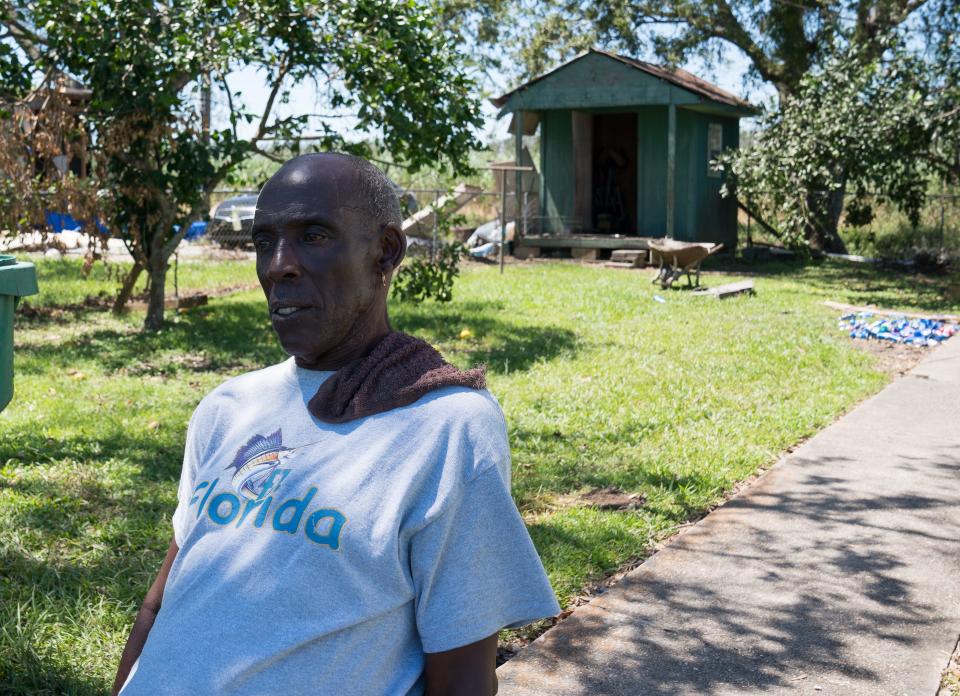
Piling disasters on top of one another
Days after the storm, the Environmental Protection Agency released an analysis detailing how people of color, often in under-resourced communities, are less able to protect themselves and recover after a disaster due to years of disinvestment. The report concluded people of color face disproportionate harm from climate change.
Higher risk: People of color face disproportionate harm from climate change, EPA says
Southern Louisiana, with its Black and Indigenous communities, is exemplary of that, experts say. Ida made landfall near low-lying Port Fourchon, which handles more than 1.5 million barrels of crude oil a day. Then the hurricane whipped through the state's petrochemical corridor, where more than 150 plants and refineries line the Mississippi River.
“There’s already a social landscape that exists on the shoreline, and then you have a storm interface with that – that social landscape is already characterized by all kinds and forms of inequality," said Louisiana State University disaster resilience researcher and sociologist Tim Slack.
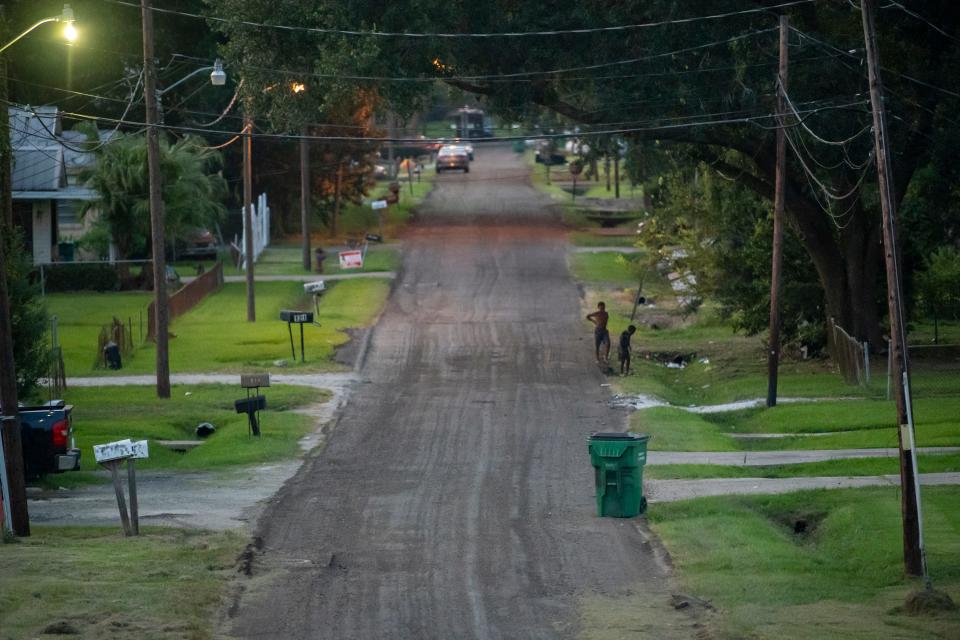
Many towns in parishes with large Black populations, like St. James and St. John the Baptist, are near these industrial plants. Those parishes have high cancer risk rates, according to the Environmental Protection Agency’s National Air Toxics Assessment.
And they have been hit especially hard by the pandemic. As of last week, St. John the Baptist Parish had recorded 155 COVID-19 deaths – nearly 80% higher than the state death rate. About 52% of those victims were Black. Many came from Reserve, according to state figures.
Deadly Discrimination: Racism turned their neighborhood into 'Cancer Alley.’ Now they’re dying from COVID-19.
The state's largest Native American tribe, the United Houma Nation, has suffered land loss from climate change and erosion partly caused by the oil and gas industry. Native people disproportionately suffer from illnesses such as asthma, diabetes and high blood pressure.
Communities were still cleaning up from Ida when Tropical Storm Nicholas brought heavy rain Tuesday and Wednesday, delaying recovery work.
“You’re just piling these disaster exposures on top of one other," said Jennifer Horney, founding director of the Program in Epidemiology and professor in the University of Delaware’s Disaster Research Center. “And you’re starting from a baseline in the Gulf Coast where there’s already a lot of social vulnerabilities in place even without the disaster.”

In St. John the Baptist Parish, home to Denka's neoprene plant, chemicals are emitted at dangerously high levels, well above what the EPA considers safe. Before Denka bought the plant, DuPont manufactured chloroprene there. That's one of the chemicals used and emitted by the plant. EPA has classified the chemical as a likely carcinogen.
The risk of developing cancer from air pollution in the census tract closest to the plant is 50 times the national average – the highest in the country, according to a University Network for Human Rights report based on the EPA's most recent assessment, released in August 2018.
Among residents surveyed who lived near the plant, cancer prevalence was 71% higher than the national rate, according to the group’s 2019 report, called "Waiting to Die."
'A pandemic tinderbox': In Hurricane Ida's aftermath, experts worry COVID-19 outbreak in Louisiana will worsen
What happens when industrial areas flood
Hurricane floodwaters can lift contaminants out of the soil, where people can come in contact with them, Horney said.
Following Hurricane Harvey, low-income, Hispanic neighborhoods and those with higher numbers of disabled residents along Texas' coast had disproportionate chemical exposure risks, according to a study published in October in the journal Population and Environment.
The threat doesn't go away when the debris is cleared and the waters recede, said Horney, who conducted public health assessments after Hurricanes Katrina and Harvey. Those contaminants can be absorbed back into the soil.
"We know that repeated exposure to these types of disasters has a cumulative effect,” she said.
Beverly Wright, executive director of the Deep South Center for Environmental Justice, said levees built after Katrina protected some communities from flooding, but she is saddened her communities of color still suffered in Ida.
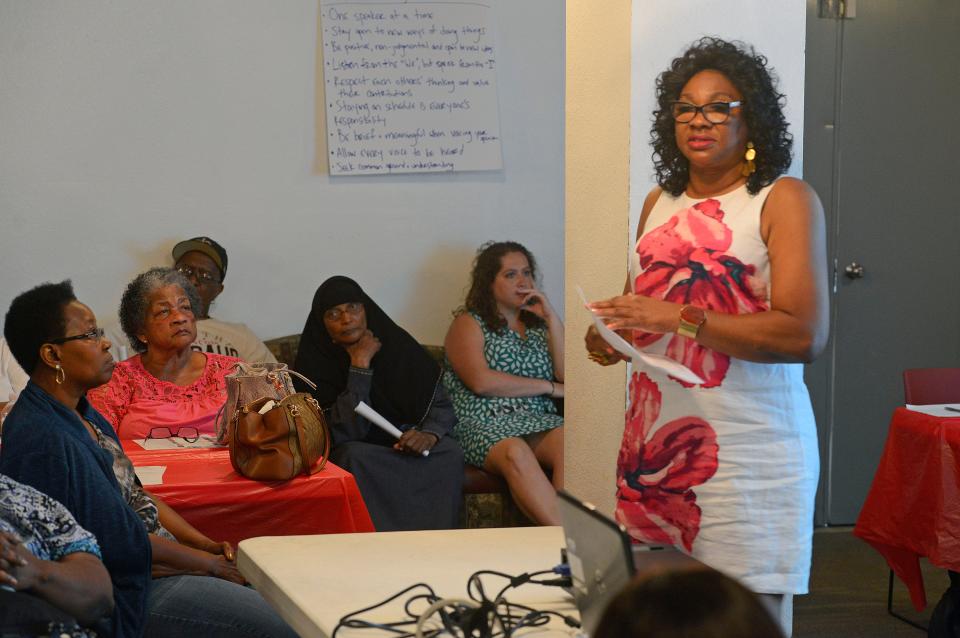
“It’s horrible; we haven’t found a way to protect our most vulnerable,” she said. “Outlying parishes were flooded without protection.”
A dearth of public health data masks the problem of chemical exposures both before and after a disaster, she said.
Though air, soil and water samples are taken, and the environment is known to have staggering levels of chemical compounds, she said, it's not routine to test for chemicals in the body.
“We oftentimes don’t get enough information in time,” Wright said. “These storms will increase, not decrease. ... We need to find a better way, for the sake of all the people that come after.”
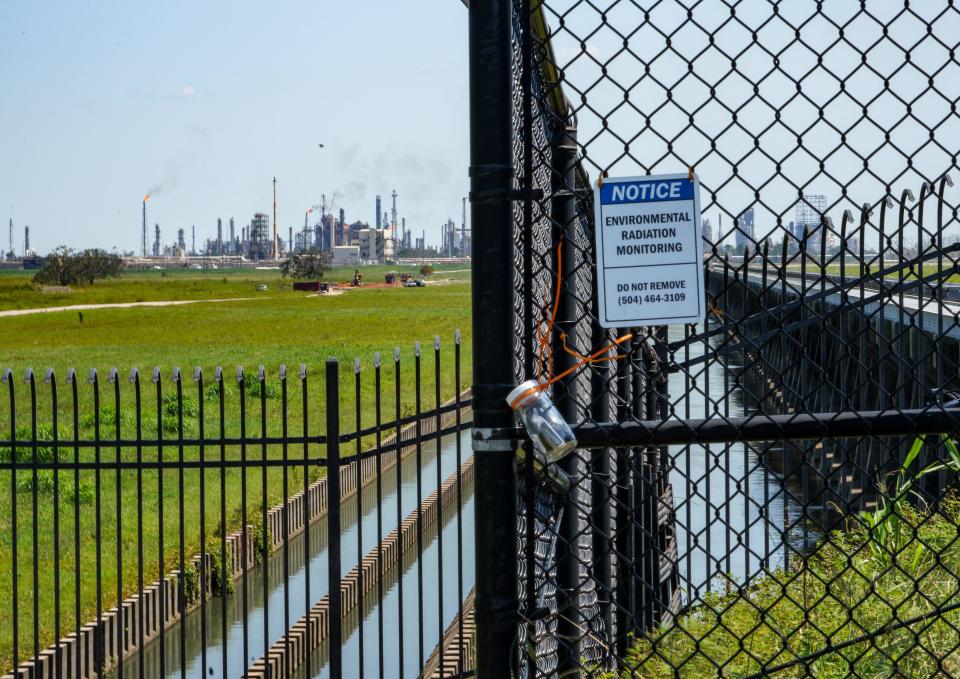
'When are we going to have a normal life again?'
In Thibodaux, about 25 miles southwest of Reserve, Shaendler Green, 47, worries about her daughter's asthma. Born via C-section, Lyric, now 7, suffered a punctured lung during childbirth and has struggled with asthma her whole life.
Every year when the sweet black clouds of smoke rise from the burning sugar cane fields surrounding their home, Lyric struggles to breathe, Green said.
“She has allergies real bad and the burning of the cane makes it worse," said Green as her daughter played on an iPhone outside their storm-damaged home. They have a small generator, but the storm fried the electrical circuits in their bathroom. Green has been bathing her kids in the dark.

Green said she worries the storm will have stirred up dust or other allergens that might trigger her daughter's asthma.
Her fears are not unfounded. After a hurricane, air pollution from piles of debris, mold, dust and chemicals can exacerbate asthma and allergy symptoms, said Jonathan Sury. He's the project director for communications and field operations at Columbia University’s National Center for Disaster Preparedness.
“Anytime there is floodwater and it comes in proximity to industrial sites – to oil refineries, to pig farms – (it) ... has the potential to carry those contaminants and toxins,” Sury said. He has researched long-term disaster resiliency and recovery issues on the Gulf Coast since Hurricane Katrina.
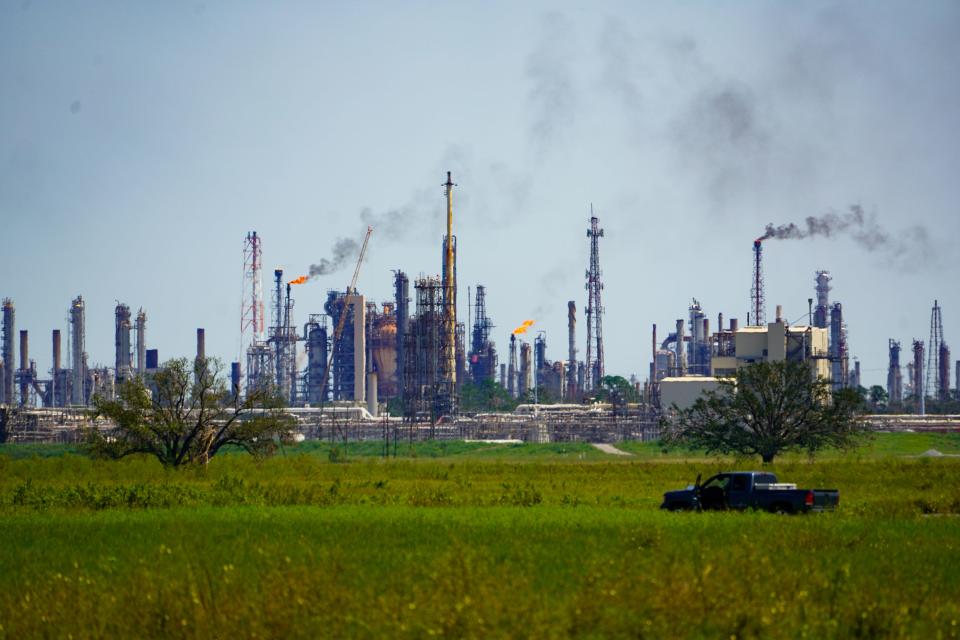
Children are especially vulnerable to exposure to contaminants, he said. Symptoms can range from rashes to coughing.
With school suspended indefinitely, Green is concerned her kids will fall even further behind the rest of the country. Louisiana's public schools were already ranked near the bottom nationally before the pandemic, and Green's kids spent all of last year learning remotely – which they can't do now because their internet is out, along with the power.
"It’s like we’re homeless in our own home," Green said, sitting in the shade. "I am exhausted. So exhausted. What do you tell the kids asking, 'When are we going to have a normal life again?'"
Green didn't evacuate for Ida because she was worried about post-storm looting. After experiencing a Category 4 storm, she won't stick around again. If climate change makes storms bigger than Ida, "well, they can steal what they want because I ain’t staying.”
Louisiana's Indigenous communities face more risk on less land
Louisiana's coastal Indigenous communities, on the front lines of climate change as storms alter the state's topography, suffered, too. Some of those tribes, such as the United Houma Nation, lack federal recognition, which hinders certain types of federal assistance.

August Creppel, the tribe's chief, has been juggling 24-hour shifts as a firefighter with helping his tribe. His voice was low and weary.
Just the other day, he helped rescue an older resident who was trapped in a water-filled ditch, he said. Some of his tribal members, who live across six parishes, have half a home to return to, he said.
“It’s not that some people don’t want to evacuate. Some people can’t afford to,” he said. “They’ve got to buy their medicine, pay their light bill, put food in their house.”
Asthma, diabetes and high blood pressure run rampant among his tribal members, many of whom have jobs fishing and working on oil rigs, he said.
“We have less land to protect us when a hurricane come in,” he said. “Climate change, coastal erosion – we have land that washed away.”
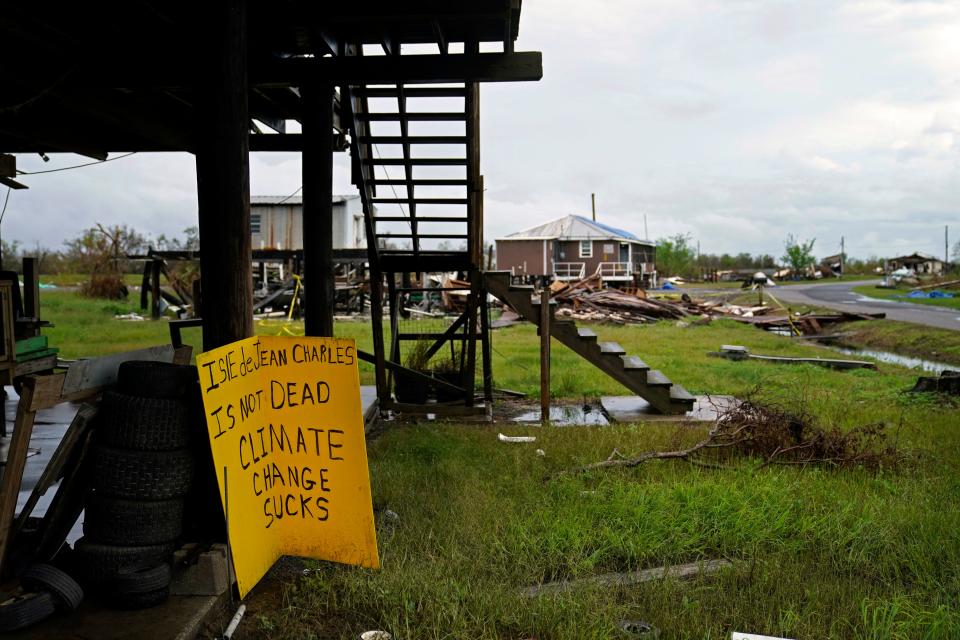
University of Pittsburgh Graduate School of Public Health dean Maureen Lichtveld, an environmental health specialist who is working with the Houma Nation, said she is most worried about children, the elderly and pregnant women. They're all more vulnerable to environmental health hazards as climate change threatens their homes, she said.
“The developing fetus very much depends on the health of the mom,” said Lichtveld, who is also a physician. “Many pregnant women may not have access to quality health care, which is worsened by the pandemic and Ida's damage to health care facilities.
Lichtveld, who once led disease-prevention programs in Gulf Coast communities, said science-driven strategies need to be implemented to correct health inequities and disparities in recovery after a storm.
“My greatest worry is climate change," she said. "I’m very worried that not enough attention is paid to these persistent inequities.”

As Holland looked out the windshield at his damaged house, debris-strewn yard and collapsed storage shed, he worried about how he'll recover. He's permanently disabled and takes 14 pills a day. Just walking around his postage-stamp lawn exhausts him.
He was sick and disabled before the hurricane, barely making it. Now, he's not sure what will happen.
“There’s a lot to clean up and I can’t do none of it," he said. “I don’t do nothing but go to the doctor.”
Contributing: Rick Jervis
Reach Nada Hassanein at nhassanein@usatoday.com or on Twitter @nhassanein_. Reach Trevor Hughes at thughes21@usatoday.com or on Twitter at @trevorhughes.
This article originally appeared on USA TODAY: Climate change adds to suffering in Black, minority communities in La.

 Yahoo Movies
Yahoo Movies 
